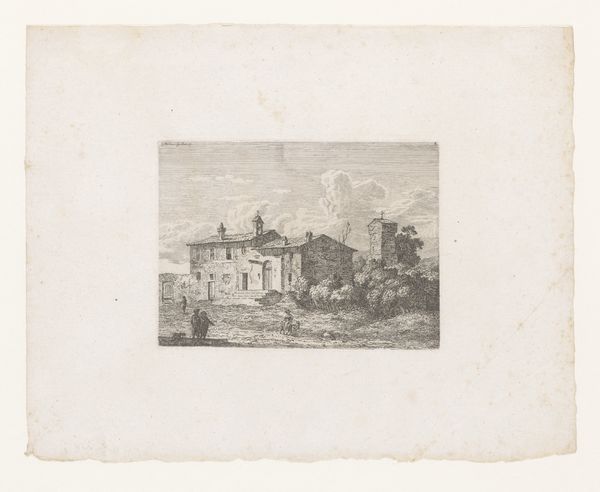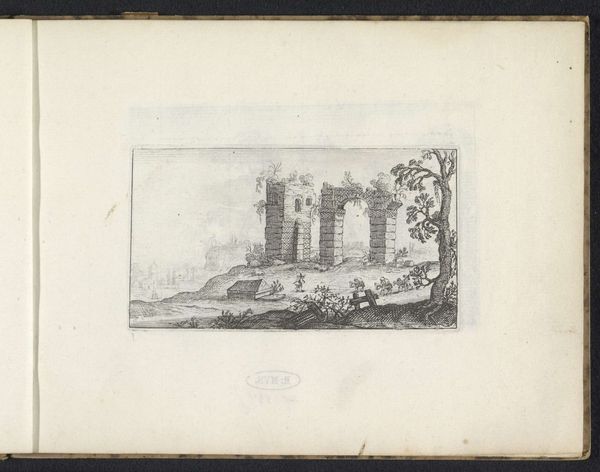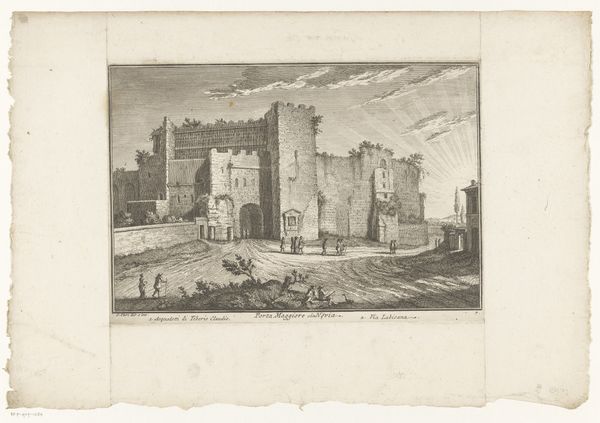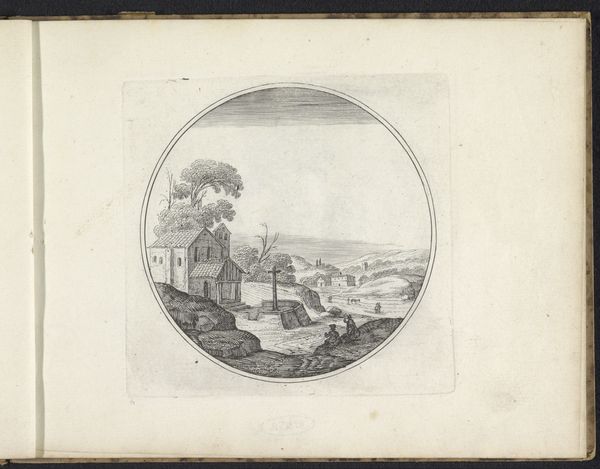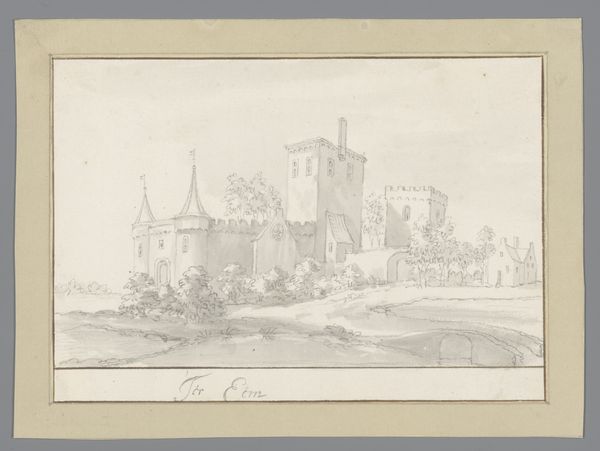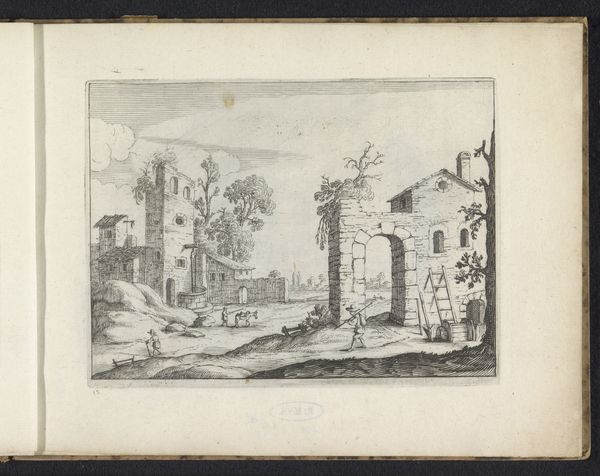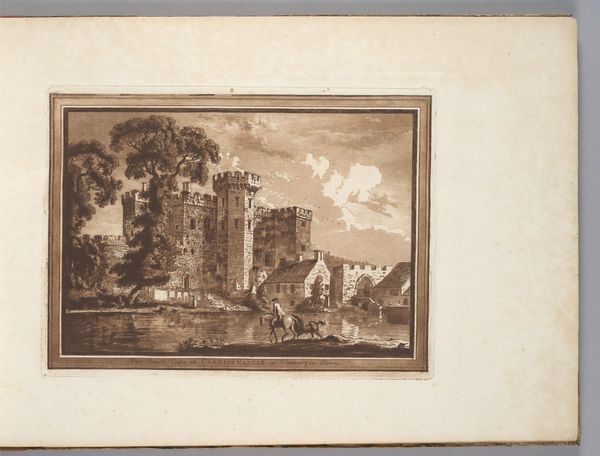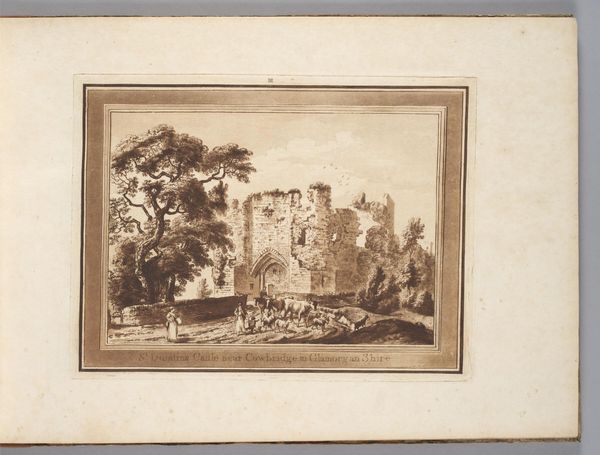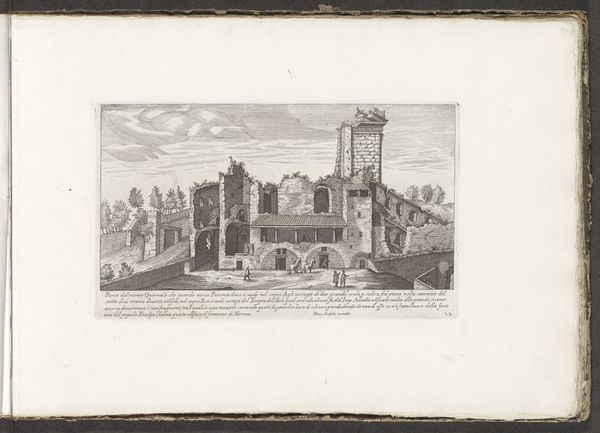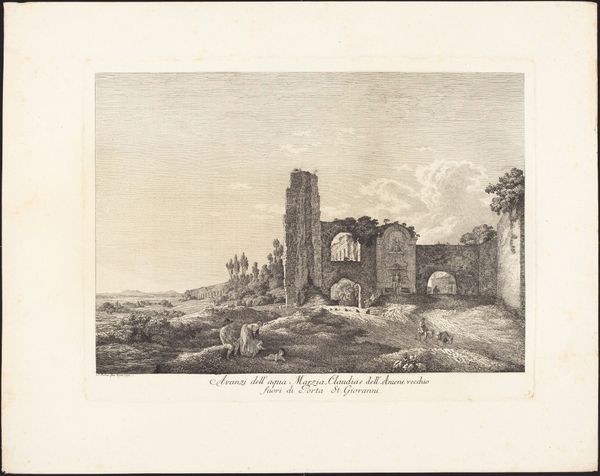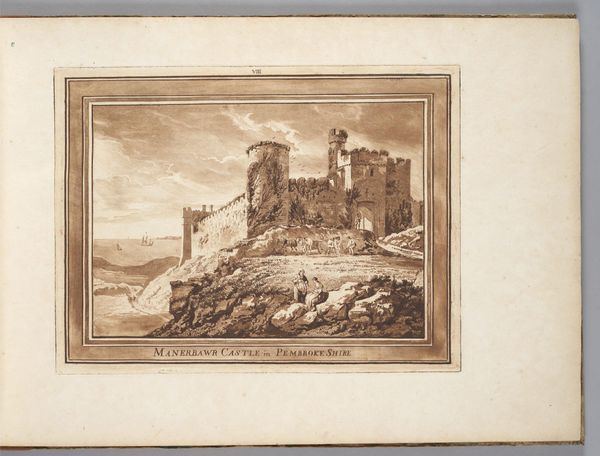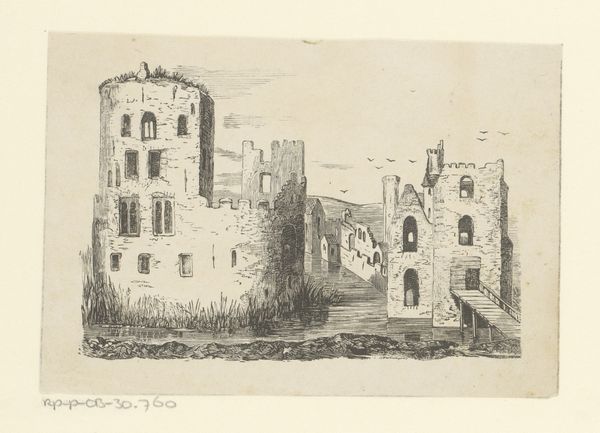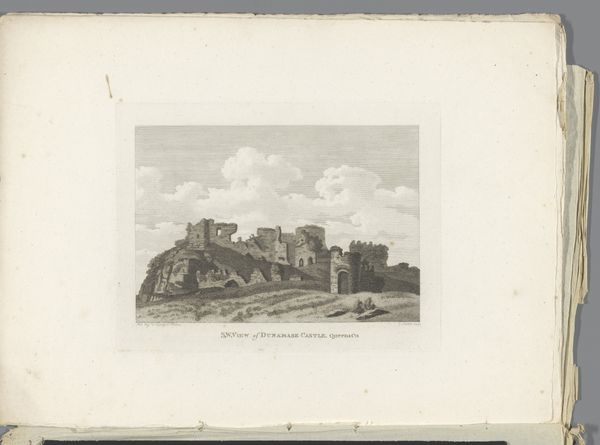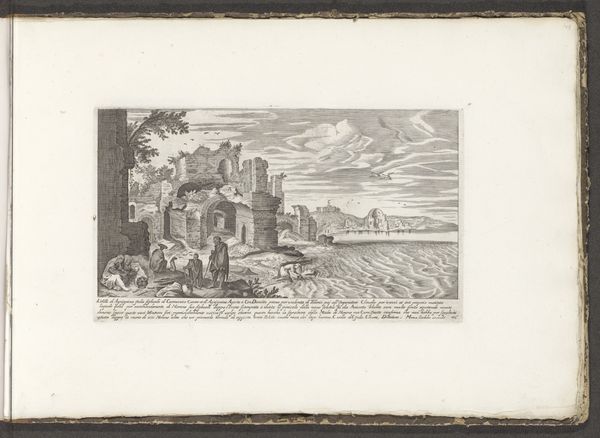
drawing, etching, paper, ink, engraving
#
drawing
#
etching
#
landscape
#
classical-realism
#
paper
#
ink
#
coloured pencil
#
history-painting
#
engraving
Dimensions: height 109 mm, width 105 mm
Copyright: Rijks Museum: Open Domain
Chaerles de Hooch made this small etching of a ruined building called 'Cais Mario' in 1626. This was a time when the Dutch Republic was flexing its muscles as a global power, and there was a vogue among Dutch artists for Italianate landscapes. The image taps into a deep well of classical and renaissance ideas about ruins as signs of the rise and fall of empires and the vanity of human wishes. But in this case, we have to consider that the ruin is given a very different emphasis. Instead of a heroic landscape, we see ordinary workers going about their business amid the remains of the past. This image is part of a series, and the presence of a printed border reminds us that it was probably made for a book. To understand the meaning and purpose of art like this, we need to look to archival sources such as merchants' records, inventories, and publishing history, which are essential for understanding the social life of images.
Comments
No comments
Be the first to comment and join the conversation on the ultimate creative platform.
